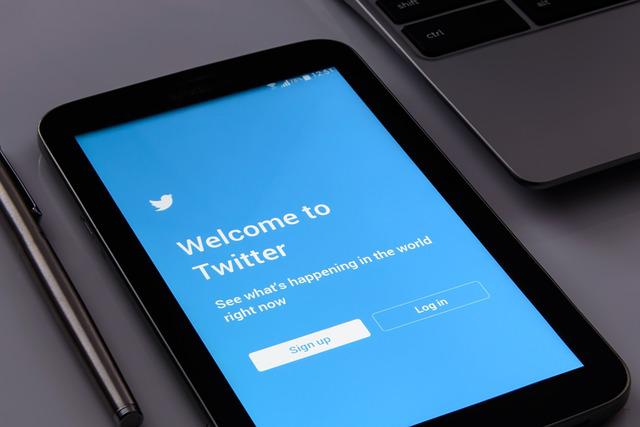Microblogging Examples
In this article we’re going to look at microblogging examples, what microblogging is, and the difference between traditional blogging and microblogging.
What is Microblogging?
Micro blogging, sometimes called micro blogging, is a type of blogging that allows you to share short messages called posts. These posts can not be longer than 140 characters, which makes it ideal for mobile devices. It is a modern way to communicate with friends and family, as well as an effective marketing strategy.
Microblogging platforms have gained popularity with the growth of smartphones. Nowadays it is difficult to imagine our lives without our smartphones. We use them to talk, text, watch videos and even for working. And now we can’t imagine our lives without microblogging either.
Microblogging Consists of Short Messages
Microblogging consists of short messages. It is about posting short messages on the Internet, usually having to do with your activities or thoughts. It can be a type of diary, but it differs from “regular” diaries because it’s usually posted online, and because micro bloggers usually post very short messages (e.g. only a few words). Micro blogs are also different from many other types of blogs in that they aren’t necessarily personal. Often, people will create micro blogs for specific purposes, such as to provide information about upcoming events or to share their opinions with others.
There is no single accepted definition of what constitutes a “micro blog”. However, it’s generally agreed that the typical micro blog has the following characteristics:
- Less than 140 characters per post (this is Twitter’s character limit)
- Posts (or “tweets”) sent out in real time
- The user interacts with other users by sending and responding to direct messages (DMs), rather than replying to other tweets. (The latter type of interaction is called retweeting.)
Microblogging Definition
In the past, blogs and microblogs have been confused with each other. Today, we will see what is the difference between a blog and a microblog.
A blog is defined as a website that contains a chronological set of entries (posts) which are displayed in reverse chronological order. The word “blog” was coined by Jorn Barger on 17 December 1997, and was defined as “We’re moving back into my place on Tuesday and I should have the internet up and running by then.
The word “weblog” originally referred to the fact that many blogs were maintained by individuals using web log editing software. Consequently, a “weblog” often features the use of Internet-style comment facilities such as those found at blog sites.
On the other hand, a “microblog” is a short form of blogging which only allows users to post short posts or messages. Microblogs are usually updated frequently throughout the day or week.
The term “microblogging” was coined by the creator of Twitter, Evan Williams, who has stated that he derived the word “microblogging” from micro- and blog.
Microblogging is a relatively new social media format that is starting to become increasingly popular. It’s basically the act of posting small bits and pieces of information, often in the form of quotes, pictures, thoughts, etc. It allows users to interact with other users in a short amount of time and allows for more interaction.
In a microblog, there are also hashtags which allow users to search for posts pertaining to a certain topic or event. Microblogs have been used for many different forms of communication: Twitter and Instagram are two extremely popular ones; however, there are several others out there that are gaining popularity at an alarming rate.
Blogging vs Microblogging
Here’s another way of looking at this. A blog is a site where you post content in an ongoing series. Microblogging sites like Twitter and Tumblr are more like streams of content, which are posted and then disappear from your page.
With these definitions in mind, we can now see what is the difference between a blog and a microblog.
Let’s Take a Look at Microblogging Examples and Platforms
Here are some of the websites that allow users to microblog:
- Twitter (The original microblogging platform)
- Plurk
- Tumblr
These are just microblogging examples that are popular with microbloggers. There are many others available where you can build an audience and share your messages, thoughts, news and updates.
What are the Benefits of Microblogging?
Microblogs are a great way to keep in touch with family and friends—you can post updates about what you’re doing, share photos and videos, or just say hi and let everyone know you’re thinking of them. They’re especially useful if you have a lot of people to keep up with who live far away, or if you want to keep your social circle small enough that it doesn’t get overwhelming to try to communicate with everyone at once.
In the past, we’ve had sites like Twitter and Tumblr where we could post text updates, but the way they worked wasn’t the most convenient. For example, it’s not easy to post more than one thing at a time when using Twitter’s interface; it’s difficult to add things easily on Tumblr; both platforms display posts in chronological order, which means that each time you go online and make a new post, you have to start at the very beginning of your timeline before your followers see anything new.
One of the best features about microblogging is that it isn’t permanent—you don’t have to worry about what you say because there’s no long-term commitment. It’s also good for people who aren’t sure how much they’ll want to use a site long-term because they don’t have to commit to any specific content – as there isn’t an end goal.
What Does Microblogging have to Offer Over Other Forms of Social Media?
Well, for starters, it can get you in touch with people that you would never be able to talk to otherwise. The ability to follow strangers as well as friends leads to a more inclusive community. Also, it is much easier to keep up with the latest news, because posts are updated frequently and are usually about what is happening right now.
Microblogging can also be a great way to keep up with friends, especially if they live in a different city, state or even country. They do not have time to send out long posts documenting their day every day, but they do have time to post short updates of their lives throughout the day.


